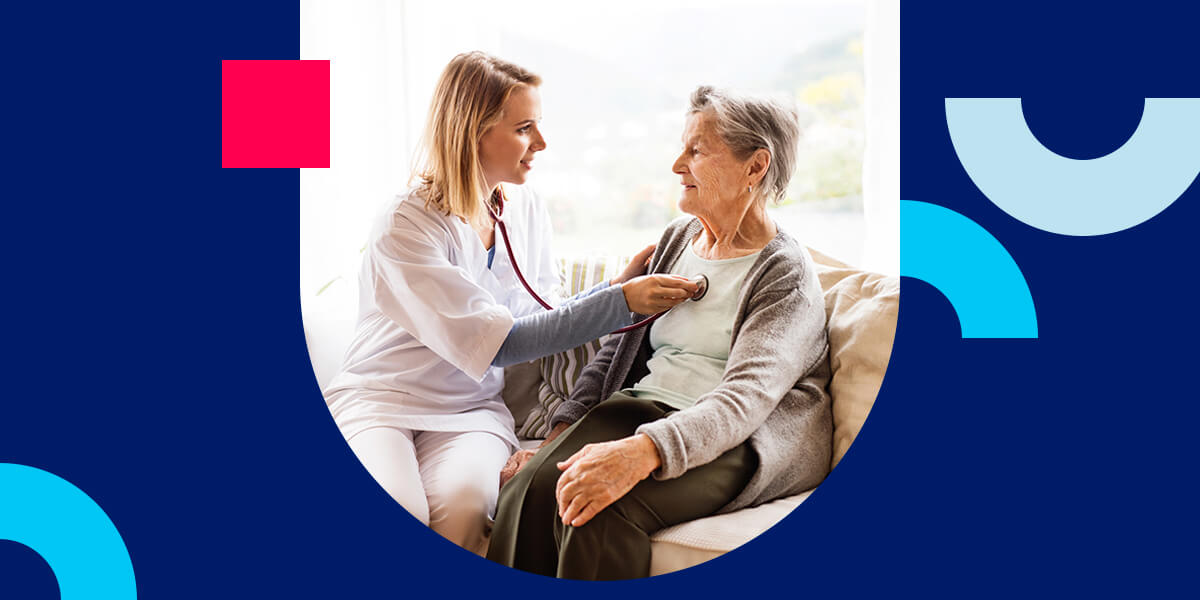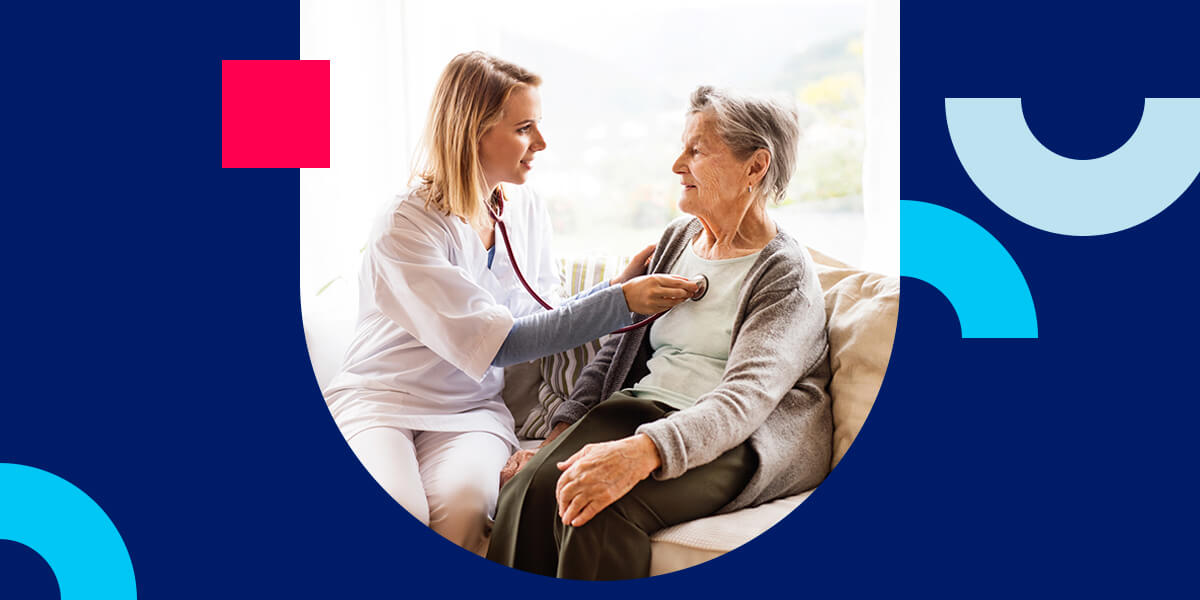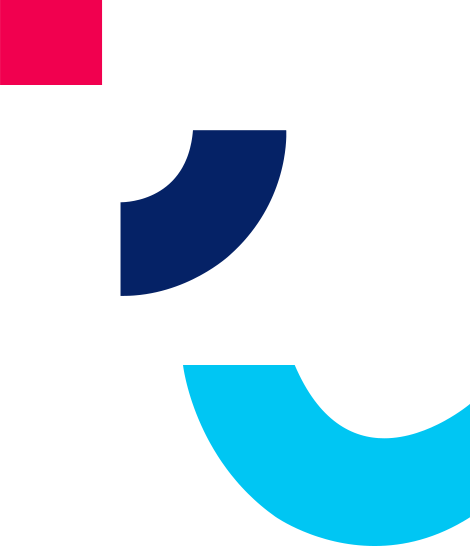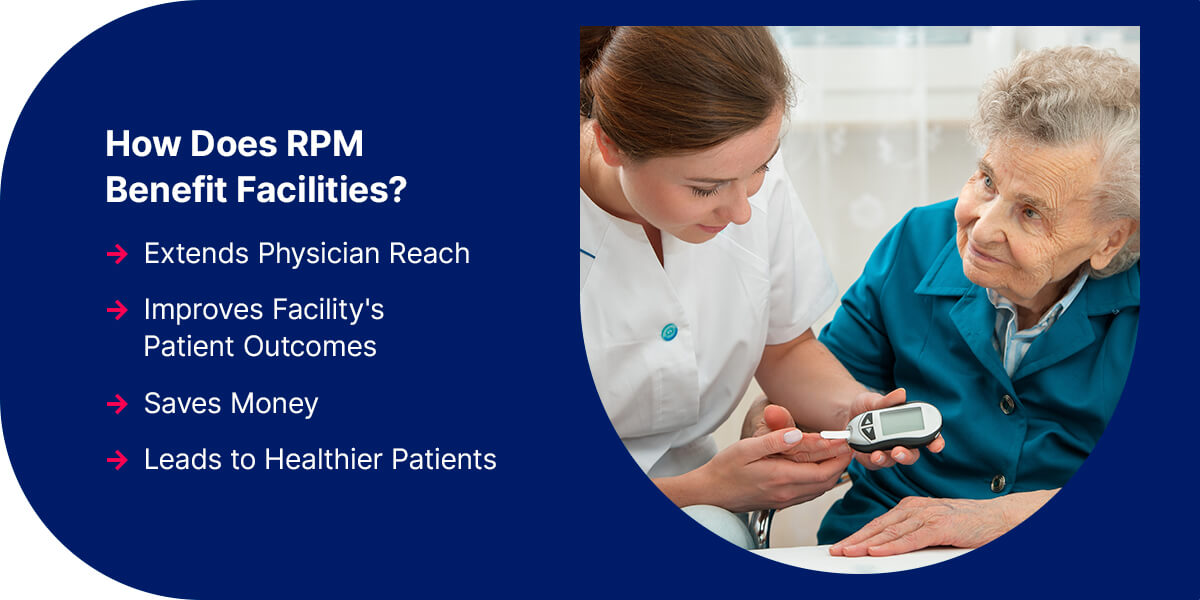
Benefits of Remote Patient Monitoring
Benefits of Remote Patient Monitoring

Remote Patient Monitoring (RPM) gained rapid exposure during the pandemic when virtual medical care was safer than in-person visits. Now, the use of RPM has greatly accelerated and is becoming widely accepted and sought after.
What Is Remote Patient Monitoring?
Remote patient monitoring is a way for health care providers to monitor a patient's health status and vitals remotely and often at more frequent intervals. The practice involves the use of electronic tools to capture and record a patient's medical data. The information is then transmitted to a clinical team in a separate location for review and management.
Traditional RPM typically uses the following devices to obtain patient biometrics:
- Heart monitors
- Pulse oximeters
- Blood pressure monitors
- Blood glucose meters
- Weight scales
Most of these devices are wearable, including smartwatches and continuous blood glucose monitoring devices. While they can enable around-the-clock monitoring, wearables are difficult to ensure patient compliance with and also require additional staff time to fit and implement. The solution? 100% contactless RPM.

The Benefits of RPM
RPM is useful for managing chronic conditions, allowing facilities to monitor patients proactively and with much higher frequency than is available with in-person care. RPM is instrumental in treating patients with ongoing needs, such as those with the following conditions:
- Heart disease
- Diabetes
- Asthma
- Hypertension
- Congestive Heart Failure (CHF)
- Chronic Obstructive Pulmonary Disease (COPD)
- Long-lasting symptoms of COVID-19

How Does RPM Benefit Facilities?
Extends Physician Reach
Remote patient monitoring allows physicians and clinicians to keep tabs on their patients from afar, which extends their reach and, in a sense, makes them more available to their patients. Clinicians can analyze transmitted patient data and make adjustments to the treatment plan as needed without having to schedule an in-person visit, which can delay care and present hurdles for some patients.
Improves Facility's Patient Outcomes
A common goal for health care facilities is to improve patient outcomes by reducing the occurrence of rehospitalization, and RPM can help achieve that. Facilities can leverage remote patient monitoring to identify clinical deterioration earlier through continuous monitoring. By establishing baselines for the patient, more proactive interventions are possible when significant deviations take place.
Saves Money
Unplanned hospital readmissions can place a major financial strain on health care facilities. Hospitals in the United States spend over $52.4 billion each year caring for patients readmitted within 30 days for a previously treated concern. Fortunately, RPM can help centers avoid readmissions and save money. RPM enables medical providers to identify health concerns early and respond with adjusted treatment measures.
How Does RPM Benefit Patients?
Improves Patient Outcomes
Getting readmitted for a condition they've already been in the hospital for can be a scary, frustrating and even risky experience for patients. They may begin to feel that their health concerns are untreatable, or they may lose confidence in their medical team. Moreover, patients may be vulnerable to hospital-acquired infections if they get readmitted while still recovering from a previous stay.
Utilizing remote patient monitoring can reduce their risk of readmission by enabling providers to observe their health status continuously and respond to changes before they escalate.
Improves Patient Satisfaction
Greater patient satisfaction is another remote patient monitoring benefit. RPM can boost patient satisfaction by:
- Improving the patient experience: RPM programs meet patients where they are with high-quality access to care. They can enjoy better communication without modifying their day-to-day activities or having to worry about complying with wearable devices. Ensuring optimal care and avoiding the emotional burden of a hospital visit.
- Reducing health care costs: On a large scale, remote patient monitoring reduces the risk of costly emergency visits and hospital readmissions. It also helps patients save money and benefits they may otherwise spend on transportation to and from doctor visits.

The Expanding Field of RPM
As health care technology advances and the need for convenient virtual services grows, those in health care are turning to remote patient monitoring, and payers are accepting it. By 2024, 30 million U.S. patients will likely use RPM tools to manage their health.
In light of the many benefits covered here, as well as its acceptance by patients and insurers, it's safe to say that remote patient monitoring has earned its place in the health care landscape. Is your facility ready to offer it?
Speak With Our Experts!
Medrina is a physician-owned practice of medical professionals specializing in rehabilitative care. We can help your skilled nursing facility improve patient outcomes by providing dedicated physiatrists to rehabilitate patients with remote patient monitoring to get them back to the lives they love. Reach out to Medrina today to learn more about the benefits of remote patient monitoring for doctors.

